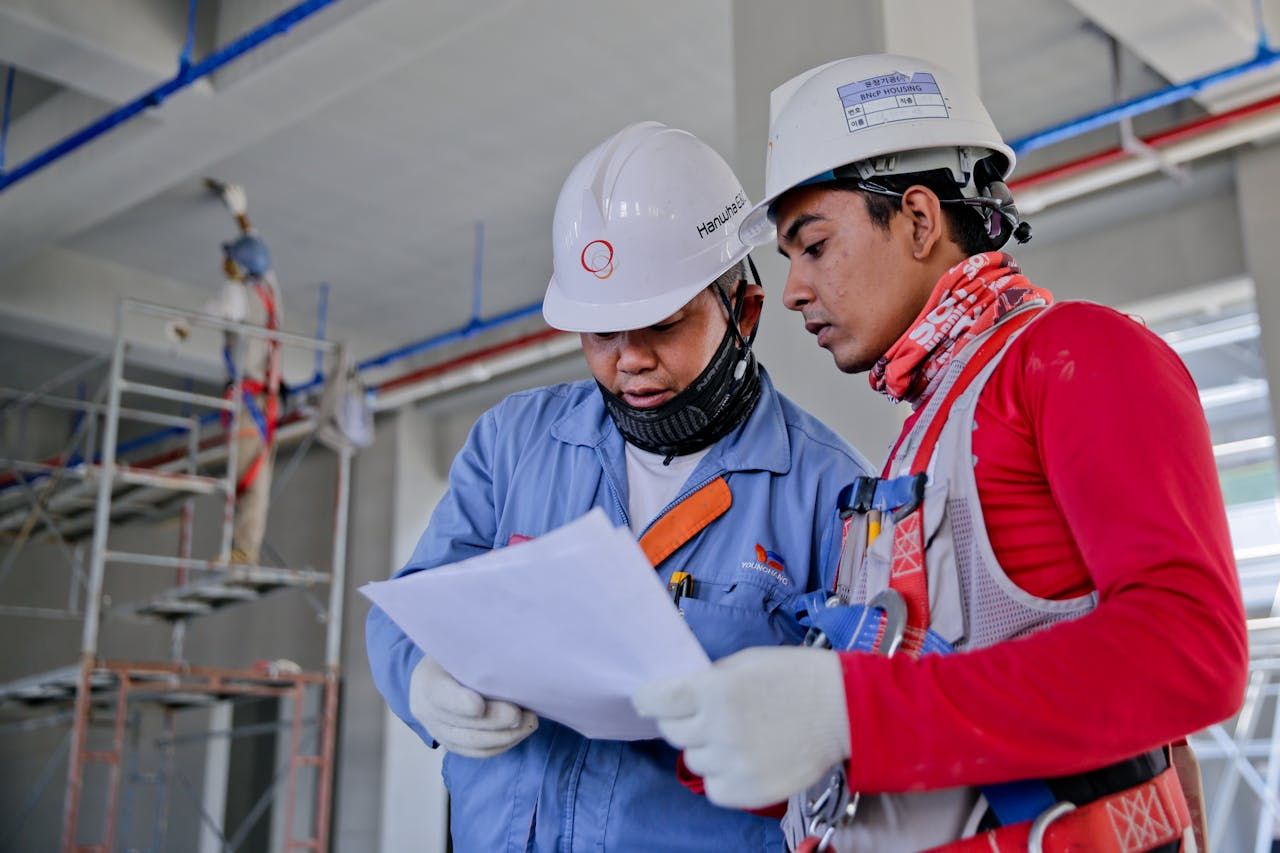What is an Agile Team? Definition, Frameworks, and How to Build a Team for 2026
By definition, being agile refers to the ability to move quickly with little restraint, enabling one to easily shift to various platforms. As such, the agile methodology started in the software development world, and has since branched out to different industries (Poepsel, 2019). For instance, Mission Bell Winery and Saab have adopted the methodology (Rigby, et.al., 2016). Likewise, Spotify and eBay implemented the approach while Walmart has begun experimenting with it a few years ago (Nyce, 2017).
Considering that a recent study showed that 86% of buyers are more fond of customer experience rather than cheaper prices or even the product itself (Kulbyte, 2021), most companies have been shifting their teams to agile forms to meet customer expectations better and faster. Nowadays, being agile is becoming the go-to approach in management to increase productivity and improve performance (Chappell, 2020).
But what is an agile team exactly? This article will discuss the agile methodology definition, how an agile team works, its importance, relevance, and advantages. After this reading, you should be able to familiarize yourself with the methodology, see if it fits your organization, and define agile according to your needs.
What is an Agile Team? Table of Contents
- What Is an Agile Team?
- What Are the Advantages of Agile Methodology?
- When and Where Is Agile Methodology Most Effective?
- What Are the Different Agile Frameworks?
- How to Build an Agile Team?
- What Are the Common Challenges in Implementing an Agile Team?
- How Can You Measure the Success of an Agile Team?
- How Can Agile Methodologies Enhance Construction Management?
- How Can Digital Tools Enhance Agile Team Collaboration?
- What Role Does Continuous Professional Development Play in Agile Teams?
- How Can Agile Practices Influence Career Growth and Compensation?
- How Can Accelerated Education Empower Agile Team Leaders?
A Brief History of the Agile Methodology
Various companies that embraced agile were able to cope with the pace of modern business (Poepsel, 2019). To build an agile team, however, a manager must first embrace the methodology and get a good grasp of its elements. One can start with knowing its evolution through the years.
During the 1990s, the software development industry faced the challenge of being unable to move fast enough to satisfy their customers’ demands (Muslihat, 2018). It was dubbed as the “application delivery crisis” or “application development lag” (Varhol, 2019). In other words, various software development projects during this period either began failing or took too much time to complete (wrike.com, n.d.). The reason is that the industry still followed traditional development models, such as the waterfall methodology, which made it almost impossible to meet their customer’s demands (Varhol, 2019).
In response, the industry sought to change its ways to adapt to the situation. In 2001, 17 technologists devised a model called the “Agile Manifesto,” which was bound to four main values, all aiming to develop better software (Sacolick, 2020). These include:
- Individuals and interactions over processes and tools
- Working software over comprehensive documentation
- Customer collaboration over contract negotiation
- Responding to change over following a plan
The creation of this manifesto led to the formation of the “Agile Alliance'' (Highsmith, 2001). The primary vision of this alliance is to spread the agile methodology in the software development industries, but agile ultimately found itself being practiced by various companies 10 years later (Lynn, 2019).
What Is an Agile Team?
The agile methodology is simply a project management model where a project is divided into various stages with a focus on iterations for each stage to ensure product quality. In other words, it involves collaborative efforts from cross-functional teams and their clients to come up with solutions and answer demands.
Agile Team Defined
The agile team definition is a specialized team of people designed to adapt to the needs of agile project management (Chappell, 2020). In other words, it is a group of professionals whose specialization is to execute projects using agile methodology features and who are equipped with the right experience and high knowledge levels (Kashyap, 2021). The manager is responsible for building an agile team by filling it with people who are suited to the roles required, hence the structure, and setting the agile team size.
Agile Team Structure
What differentiates a ‘group’ from a ‘team’ is that the latter involves a structure to function properly. So, how does agile teams meaning differ from that of a regular group? The same applies to agile teams, which cannot perform the task given without any form of hierarchy or roles. Furthermore, establishing agile team characteristics will entirely depend on the company’s profile, including the product and the company’s goals (Lynn, 2019).
Product Owner
An essential part of the agile team, the product owner primarily represents all the stakeholders of the team. In addition, he’s responsible for setting the direction of product development and monitoring the team’s overall progress (Raza, 2019). He gives the agile team meaning by setting goals and ensuring that all the major objectives are met. Moreover, the owner heads the agile team management roster, as managers report to him. Agile teams characteristics are subject to his approval.
Project Manager
A project manager leads an agile development team as he oversees the team’s progress, making the members accountable for their roles and aiding his members whenever trouble arises. The project manager is also responsible for getting feedback from the product owner and relays it to members, ensuring that the feedback was well-received, and guides them through the stage (Chappell, 2020).
Team Members
What is agile team composed of with the exception of managers and owners? Team members are the ones who primarily work on the project (Chappell, 2020). They are individuals whose skills are necessary for the team. These involve either writing, product designing, programming, or testing (Raza, 2019).
Project Stakeholders
These people may not be directly involved in the development process of the product, but their roles can greatly influence the team’s overall performance (Raza, 2019). Project stakeholders may be marketers, business executives, senior project managers, investors, external auditors, and support team members (Chappell, 2020).
What Are the Advantages of Agile Methodology?
As companies continue to shift to the agile methodology, many are still unaware of its advantages over other methods. Some of these advantages are listed below:
- Implementation of solutions is hastened
- Significant levels of waste are reduced due to resource minimization
- High levels of adaptability
- High levels of flexibility
- Increased transparency
- Delivery times are faster
- Detection of any malformations, problems, and defects became quicker
- Development processes are optimized
- Lightweight structure
- Less risk of goals that are missed
- Better control of the project
- Customer engagement is drastically improved
- Products are of higher quality
- Higher levels of collaboration and feedback
When and Where Is Agile Methodology Most Effective?
No matter how good a method is, it still cannot be implemented everywhere. Some aspects will maximize what agile methodology can offer. Below are some of the conditions where the project management method is seen to be most effective (Rigby, et.al., 2016).
- In a market environment - Where customer’s demands, preferences, and solution options change almost every minute.
- For customer involvement - Agile methodology is most effective when close collaboration and swift feedback are present. In addition, when customers gradually know what they want as the process pushes through, it calls for agile methodology.
- For innovation types - If problems are complex, product specifications may change, creative breakthroughs and market time are essential, and for a project with an unclear scope, the agile methodology is recommended.
- For work modularity - If work can be broken into stages and done through iterative cycles, and developments born out of increments already have value, agile methodology is more favorable.
- For interval mistakes - Agile methodology is acceptable if these mistakes provide lessons.

What Are the Different Agile Frameworks?
While agile boosts the productivity of various industries, there is no perfect formula for the methodology (Drumond, n.d.). This leads to some business ventures adopting various frameworks of the methodology, which are primarily focused on project management and executing project plans (wrike.com, n.d.). After all, these industries presently operate in overly dynamic environments.
Scrum Framework
A superficial subset of the agile methodology, Scrum is the most widely used framework for most companies (CPrime, Inc., 2021). The scrum team definition states that it is a lightweight process, a sprint-based framework that aims to deliver the highest value to stakeholders (business.com, 2020). Five values encompass Scrum, which are commitment, focus, respect, openness, and courage (Schwaber & Sutherland, 2020).
What is the agile definition in terms of Scrum? What makes Scrum different from agile is that the agile meaning defines it as a philosophy, while Scrum is a subset of agile (Stobierski,2021). Furthermore, what sets Scrum apart from other frameworks are the team roles, events, and artifacts (Muslihat, 2018).
Team Roles
The Scrum framework requires a team to handle projects. One characteristic a Scrum team needs is being cross-functional, which means that all members should possess a certain skill that is necessary for each sprint (Schwaber & Sutherland, 2020). The roles are listed below:
- Scrum Master - The role primarily involves managing team interactions, setting meetings, and maximizing productivity (wrike.com, n.d.). It can also be termed as “servant-leader," which sets it apart from a Project Manager, and ensures that the team follows the Scrum framework (Muslihat, 2018).
- Product Owner - Deemed as the team’s stakeholder, this role is primarily responsible for maximizing the product’s value and managing the product’s backlog (Athuraliya, 2021). The role also requires determining product expectations and recording changes to ensure value (business.com, 2020).
- Developers/Development Team - The role basically is a group of specialized professionals who deliver the product (Muslihat, 2018). It is normally self-organized and cross-functional, and responsible for designing, testing, producing, and releasing the final output or product (wrike.com., n.d.)
Events
Events in Scrum are defined as a chance to inspect and adapt the Scrum artifacts (Schwaber & Sutherland, 2020). Five events encompass the Sprint process, which has an allotted duration. To avoid unnecessary meetings, these are put in place and are usually done in one workplace (Athuraliya, 2021).
- The Sprint - This refers to the time boxes in which a product with release potential is developed (Athuraliya, 2021). The time allotted is a maximum of 30 days and is consistent for the whole process of development (Muslihat, 2018).
- Sprint Planning - This covers the event of planning of the Sprint at its very beginning, which is done by the Scrum team (Muslihat, 2018). In this, it seeks to answer three primary questions, which are as follows (Schwaber & Sutherland, 2020): Why is this Sprint valuable? What can be done in this Sprint? How will the chosen work get done?
- Daily Scrum - The primary purpose of this event is to track the progress of Sprint in achieving the team’s primary goal. Normally, the development team will consume at least 15 minutes which is done at the same workplace daily (Schwaber & Sutherland, 2020).
- Sprint Review - It is an informal meeting done by the Scrum team at the end of each sprint to discuss the progress of the stakeholders (Muslihat, 2018). During this event, the team notes the feedback and possible product improvements to increase its value (Athuraliya, 2021).
- Sprint Retrospective - This refers to the final meeting of the Sprint which involves the Scrum team discussing the overall proceedings of the previous Sprint and possible improvements for the next one (Athuraliya, 2021). It usually lasts three hours for a 30-day Sprint (Schwaber & Sutherland, 2020).
Artifacts
Artifacts represent the value of the work, which is designed to maximize key information transparency. In addition, they contain a commitment to enforcing Scrum values on the whole Scrum team (Schwaber & Sutherland, 2020)
- Product Backlog (Committed to Product Goal) - This basically is a list of requirements and goals that should be present in the final product. It is the product owner’s key responsibility in overseeing a particular artifact (wrike.com, n.d.)
- Sprint Backlog (Committed to Sprint Goal) - Similar to the product backlog, it is also a list of goals and requirements that need to be accomplished at the upcoming Sprint (Muslihat, 2018). The development team is responsible for this artifact (Athuraliya, 2018).
- Increment (Committed to Definition of Done) - An increment is basically a “step” or a “level” towards the product goal. This is governed by the concept of “Definition of Done,” which is the Increment’s state of having fulfilled the required quality description of the product (Schwaber & Sutherland, 2020).
Kanban Framework
The Kanban Framework is a subset of the agile methodology that uses visual representations for product management (wrike.com, n.d.). It encompasses a method of workflow management that focuses on continuous improvement without adding burden to the development team (Siderova, 2018). It revolves around six general practices, which are listed below (Muslihat, 2018):
- Visualization
- Limiting work in progress
- Flow management
- Making policies explicit
- Using feedback loops
- Collaborative or experimental evolution
This framework includes the popular kanban board used to visualize a project in its entirety to monitor progress (Khalil, 2021). The board is primarily divided into three columns, namely “To Do,” “Doing,” and “Done". Its tracking method means that it doesn’t require Sprints from the Scrum methodology.
Other Agile Frameworks
Aside from Scrum and Kanban, other frameworks under the agile methodology also exist but are rarely being used by industries. Listed below are just some of these frameworks.
Crystal
Crystal is a collective term used for the different agile frameworks, such as Crystal Clear, Crystal Yellow, Crystal Orange, Crystal Red, and many more. Each of these has its own structure and is chosen depending on the team size, project criticality, and project priorities. This framework in general, however, requires a set of practices, policies, and methods to ensure product quality is at the maximum (Muslihat, 2018).
Extreme Programming Framework (XP)
A framework designed for an agile team in software engineering, XP focuses on ceaseless development and uses Sprints, similar to that of Scrum. The difference is that XP is focused more on the engineering principles, which includes 12 supporting processes. These processes are as follows:
- Planning game
- Miniature releases
- Acceptance tests catered to customers
- Simplistic designs
- Programming is done by pair
- Developments that are conducted through a series of tests
- Refactoring
- Consistent integration
- Ownership of collective codes
- Standards involving coding
- Metaphor
- Sustainable pace
Dynamic Systems Development Method (DSDM)
This framework focuses more on the full project life cycle and was established to tend to rapid software delivery. Reworks are fully expected in this framework and that the developments should be made reversible. Similar to Scrum and XD, it consists of Sprints/stages. Listed below are the eight principles that govern this framework:
- On-time delivery
- Oriented on business needs
- Present collaborations
- Uncompromised quality
- Step-by-step building, coming from firm foundations
- Development through iterations
- Control demonstrations
- Clear and concise communications

How to Build an Agile Team?
As advantageous as the agile methodology is, it cannot be implemented unless there’s a specific team who’ll manage to implement its concepts. Various measures are required in building an agile team.
Size of an Agile Team
In building an agile team, one must learn how to commit to organizational stability. On average, an agile team consists of five to nine members, which excludes the project manager, project stakeholders, and product owner. In addition, a smaller number is recommended for better communication and to avoid complications due to larger team member numbers.
Qualities Needed in an Agile Team
Cross-Functional
As the agile methodology moves by dividing a certain task into stages for better management, an agile team must be as versatile as possible. This is essential since the methodology involves the process of iteration, which requires the team to be cross-functional. In other words, an agile team is sometimes required to cross over different stages to complete a project, therefore being cross-functional is a must.
Self-Organized
Agile teams must be able to handle the task without any external factors. A self-organized aspect present in an agile team is a sign that the team is a good one (Kashyap, 2021). This allows teams to invest more time in project tasks rather than worrying about project management. The absence of this quality in a team results in chaotic relations, giving in poor results in terms of the final output.
Unified Outlook
Being focused is key to having a successful team. An agile team is required to have similar goals that can only be achieved by working together. Target goals should motivate the team to further improve the quality of the product and increase productivity. It also requires team members to share respect and trust.
High Productivity Levels
For implementing the agile methodology’s primary purpose of increasing company productivity, the agile team should also be highly productive. This just means that members should show commitment to the work, trying to finish the given task in the minimum amount of time possible.
High Emotional Intelligence Levels
Emotions sometimes do arise from time to time within a team. This may be due to stress or other external factors. It may lead to the destruction of the team’s overall progress. High emotional intelligence levels simply mean having the ability to control or separate emotions from work. Being in control of emotions contributes largely to interpersonal relationships in the team (Wandile, 2018). In case team morale quavers, agile project leaders will do well to have a bank of employee motivational quotes to rally the members around.
Collaborative and Passionate
These are two important qualities an agile team should possess. A collaborative team ensures that the work shared with the members goes smoothly without any issues. In addition, a team whose members are passionate about their work can only mean high productivity levels and a high-quality end product.
Willingness to Learn and Adapt
As businesses continue to grow, so does the need of the agile team to adapt to and learn new trends in the business world. Having the ability to continuously improve is a key advantage of the agile team over others. In addition, it increases a team’s capability to work in different environments while increasing productivity at the same time.
Enhanced T-shaped skills
Having T-shaped skills only means being deeply skilled in a specific area and equal skill level for others. An agile team is said to possess this particular skill. This means that any member of the team can contribute to any area, regardless of expertise. It also is the reason why agile teams are cross-functional.
Starting an Agile Team
Listed below are some of the starting points that may aid a project supervisor in creating an agile team:
- Establish team expectations - This is important, provided that the person in charge has already selected the people who’ll be part of the agile team. The team needs to know what to expect while working. Team-building activities, including
- Establish boundaries - Setting boundaries aids the team in knowing which of its future actions will be excessive to the plan. This is because sometimes, the more a member puts into the project, the more it increases its chances of being degraded in terms of quality.
- Instill the value of self-organization to the team - Being self-organized is a quality that sets an agile team apart from other teams. This permits the team to not depend on external projects and focus instead on what it is working on. In addition, it also enhances their T-shaped skills, which are very essential in working in an agile team.
- Create means of communication with the product owner - Since the product owner is basically an important part of the team, setting up a means of communication with him ensures that the project will be done under his supervision. This is one of the key elements in starting an agile team since the team's project will depend on the product owner’s guidance.
- Avoid committing to work on behalf of the team - The commitment of the team to a project is a big part of being in an agile team. Taking part in work without their consent may lead to the members being uncommitted, or being unable to finish their part of the job. Letting the team commit to their parts will result in completing the stages of the project.
What Are the Common Challenges in Implementing an Agile Team?
Agile teams can experience multiple obstacles that hinder performance and continuous improvement. One frequent challenge is resistance to change, where team members or stakeholders are slow to adapt to new methodologies or tools. Miscommunication also arises when roles and responsibilities are not clearly defined, leading to misaligned expectations. Additionally, integrating diverse skills in a cross-functional team can reveal gaps in expertise, necessitating ongoing training and development—often supported by pursuing the best online masters degrees to enhance leadership and technical capabilities. Finally, ensuring technological readiness is crucial, as inadequate digital collaboration tools may disrupt workflows and communication efficiency.
How Can You Measure the Success of an Agile Team?
Measuring an agile team's success goes beyond completing tasks or meeting deadlines. It requires evaluating how well the team performs within the agile framework, delivering value, and continuously improving. Here are key metrics that can help assess the performance of your agile team:
- Velocity: Velocity measures the work a team can handle during a sprint. It is typically calculated by adding up the story points of the completed tasks or user stories within the sprint. Tracking velocity over time allows the team to understand its capacity and adjust for future sprints. This metric helps forecast how much work the team can realistically complete in upcoming iterations.
- Sprint Burndown Chart: A sprint burndown chart visually represents the amount of work remaining in a sprint over time. It shows the team's progress toward completing all tasks within the sprint. It can highlight any potential issues with scope creep or delays. By analyzing the burndown chart, you can identify whether the team is on track to complete the sprint goals or if interventions are needed to ensure timely delivery.
- Cycle Time: Cycle time refers to the time it takes for a task to move from the start of the work process to completion. In an agile context, shorter cycle times typically indicate that the team works efficiently and delivers value quickly. Monitoring this metric allows you to identify bottlenecks or inefficiencies in the workflow that can be improved to speed up the delivery process.
- Customer Satisfaction: Customer feedback is a critical metric for measuring an agile team's success, as agile methodologies' ultimate goal is to deliver customer value. Regularly gathering customer satisfaction data through surveys or direct feedback helps gauge whether the delivered product meets expectations. Positive customer feedback shows the team is delivering meaningful solutions, while negative feedback can highlight areas for improvement.
- Team Happiness and Collaboration: Agile teams thrive when their members are engaged, collaborative, and satisfied. Measuring team happiness through regular check-ins or surveys can provide insights into the team's morale and ability to work cohesively. High satisfaction levels often correlate with better productivity and innovation, as team members are more likely to contribute ideas and solve problems creatively when they feel valued and motivated.
How Can Agile Methodologies Enhance Construction Management?
Agile methodologies can be adapted to industries such as construction management, where projects often encounter shifting requirements and regulatory challenges. Iterative planning and frequent feedback loops can help construction managers react swiftly to design modifications, environmental factors, and stakeholder input. This approach promotes enhanced collaboration among cross-functional teams, leading to improved risk management and streamlined decision-making throughout the project lifecycle. Digital tools that support real-time updates further bridge planning and execution, ensuring that project modifications are efficiently integrated. For insights related to educational investments that support these agile adaptations, consider exploring a bachelor's degree in construction management cost.
Having an Agile Team: Why Is It Important?
As customers' demands get higher and competition becomes stiffer, companies are constrained to adjust fast to meet these challenges. A delayed product iteration or rollout can mean revenue loss or, worse, business closure. Having an agile team can help the company adjust fast and effectively, when a sudden market shift, a disruptive newcomer, or any unexpected development in the industry shakes up the routine or the status quo. In a nutshell, it helps fulfill the outlined tasks in one's project management scope.
What Role Does Continuous Professional Development Play in Agile Teams?
Continuous professional development is pivotal for agile teams to remain adaptive and innovative. Investing in skill enhancement programs, advanced certifications, or targeted courses helps team members refine technical and leadership abilities, ensuring they respond effectively to evolving market demands and project complexities. Emphasizing structured learning opportunities not only elevates individual expertise but also fosters a culture of accountability and informed risk-taking within the team. Moreover, pursuing further education—exploring what can you do with a master's in project management—can significantly contribute to bridging knowledge gaps and driving enhanced team performance over the long term.
How Do Cognitive and Emotional Factors Impact Agile Team Dynamics?
Agile team performance is significantly influenced by cognitive and emotional factors. Teams that understand and manage individual cognitive biases, stress responses, and communication styles can enhance decision-making, reduce conflicts, and innovate more effectively. By integrating psychological insights into agile practices, leaders can foster a culture of self-awareness, resilience, and adaptability. This approach not only complements technical agile frameworks but also creates an environment where emotional intelligence drives productivity and sustainable collaboration. Professionals interested in exploring how these dynamics are applied in various industries can consider opportunities in cognitive psychology careers.
How Can Digital Tools Enhance Agile Team Collaboration?
Digital tools streamline workflow and foster real-time collaboration by integrating task management, communication, and feedback channels. These platforms allow agile teams to visualize progress, coordinate remotely, and quickly adapt to project changes. Leveraging cloud-based systems and virtual boards minimizes delays and supports continuous learning within the team. Incorporating such technology can also provide actionable insights for decision-making, further enhancing team efficiency and effectiveness. For professionals interested in building a robust management foundation alongside agile skills, exploring the cheapest construction management degree can be a strategic investment.
How Can Agile Practices Influence Career Growth and Compensation?
Agile methodologies not only drive operational efficiency but also open avenues for professional advancement across industries. In sectors such as construction management, the adoption of agile practices fosters adaptive leadership and enhances decision-making skills, which can lead to accelerated career progression and improved remuneration. Integrating agile frameworks into project execution helps professionals better manage risks, streamline processes, and meet dynamic market demands, thereby positioning themselves competitively for leadership roles. For industry-specific insights on how much do construction managers make, analyzing current salary trends and pursuing continuous agile education remains essential for long-term career success.
How Can Accelerated Education Empower Agile Team Leaders?
Agile team leaders can benefit from targeted academic programs that integrate practical agile strategies with industry-specific knowledge. Structured education enhances strategic decision-making, risk mitigation, and effective communication in fast-paced environments. For example, pursuing an fast track construction management degree delivers concentrated learning designed to foster leadership acumen, ensuring that professionals remain competitive and responsive to market changes.
Key Insights
- Agile Methodology Adoption: Agile started in software development and has spread to other industries, with companies like Spotify, eBay, and Walmart adopting it to enhance customer experience and productivity.
- Customer Experience: A significant majority of buyers (86%) prioritize customer experience over price or product quality, driving companies to adopt agile practices to meet customer expectations quickly and efficiently.
- Agile Manifesto: The Agile Manifesto, created in 2001, emphasizes individuals and interactions, working software, customer collaboration, and responsiveness to change, forming the core values of agile methodology.
- Team Structure: Agile teams are cross-functional, self-organized, and typically consist of five to nine members, excluding project stakeholders and product owners.
- Roles and Responsibilities: Key roles in an agile team include the product owner, project manager, team members, and project stakeholders, each with specific responsibilities to ensure effective project execution.
- Advantages of Agile: Agile methodology offers benefits such as faster implementation, reduced waste, high adaptability and flexibility, increased transparency, faster delivery times, and improved product quality.
- Effective Use Cases: Agile is most effective in dynamic market environments, for projects requiring close customer collaboration, innovative and complex tasks, work modularity, and situations where learning from mistakes is crucial.
- Agile Frameworks: Popular agile frameworks include Scrum, Kanban, Crystal, Extreme Programming (XP), and Dynamic Systems Development Method (DSDM), each with unique practices and principles.
- Building an Agile Team: Essential steps include defining team expectations, setting boundaries, fostering self-organization, establishing communication with the product owner, and ensuring team commitment.
- Importance of Agile Teams: Agile teams enable companies to rapidly adapt to market changes, ensuring timely product iterations and maintaining competitive advantage.
FAQ
- What is an agile team? An agile team is a group of professionals specialized in executing projects using agile methodology. They are cross-functional, self-organized, and work collaboratively to deliver high-quality products efficiently.
- What are the main roles in an agile team? The main roles include the product owner, who represents stakeholders and sets development direction; the project manager, who oversees progress and facilitates communication; team members, who perform the tasks; and project stakeholders, who influence the team's performance.
- How does agile methodology benefit companies? Agile methodology accelerates solution implementation, reduces waste, enhances adaptability and flexibility, improves transparency and collaboration, shortens delivery times, and increases product quality and customer engagement.
- When is agile methodology most effective? Agile is most effective in environments with rapidly changing customer demands, projects requiring close collaboration and feedback, innovative tasks with evolving requirements, and situations where work can be broken into iterative cycles.
- What are the key frameworks under agile methodology? Key frameworks include Scrum, focusing on sprints and cross-functional teams; Kanban, using visual workflow management; Crystal, adaptable to team size and project criticality; XP, emphasizing engineering practices; and DSDM, focusing on the full project life cycle and rapid delivery.
- What qualities are essential for an agile team? Essential qualities include being cross-functional, self-organized, unified in outlook, highly productive, emotionally intelligent, collaborative, passionate, and adaptable with enhanced T-shaped skills.
- How do you start building an agile team? Start by establishing team expectations and boundaries, instilling self-organization, setting up communication with the product owner, and ensuring team commitment to their roles and tasks.
- Why is having an agile team important? Agile teams help companies quickly adapt to market shifts, maintain competitiveness, and ensure timely and high-quality product delivery, preventing potential revenue loss and business disruptions.
References:
- Ambrosino, B. (2021, March 12). 7 Traits of Successful Agile Development Teams. Magenic Inc.
- Athuraliya, A. (2021, March 9). The Ultimate Beginner’s Guide to Scrum. Creately Blog.
- Bhatt, C. (2021, March 23). 7 Characteristics of a High-Performing agile. . . Techtic Solutions.
- business.com. (2020, February 24). What Is agile Scrum Methodology? Business News Daily.
- Chappell, E. (2020). agile Team: What It Is and How to Build & Manage It. ClickUp Blog.
- Cprime, Inc. (2021, April 19). What is agile? - What is SCRUM? - agile FAQ’s. Cprime.
- Drumond, C. (n.d.). How to build a kick-ass agile team. Atlassian.
- Gauri, M. (2020, September 10). Qualities of an agile Team. agile Cockpit.
- Highsmith, J. (2001). History: The Agile Manifesto. Agile Manifesto.
- Kaiser, R. B., & Pulakos, E. (2020, April 7). To Build an agile Team, Commit to Organizational Stability. Harvard Business Review.
- Kashyap, S. (2021, January 13). Here’s Everything You Need to Know About an agile Team (and How to Build One?). ProofHub.
- Kearns, K. (2015, July 10). 5 simple tips on starting a new scrum team. Inviqa.
- Khalil, M. (2021, April 8). Kanban Methodology: The Simplest Agile Framework. Kissflow.
- Kulbyte, T. (2021, May 4). 37 Powerful Customer Experience Statistics to Know in 2021. SuperOffice.Com.
- Lynn, R. (2019, November 21). How to Make an Agile Team. Planview.
- Murphy, D. (2015, October 1). agile Team Traits. IVision.
- Muslihat, D. (2021, January 14). agile Methodology: An Overview. Zenkit.
- Nyce, C. M. (2017, December 8). Agile Software Development: A History. The Atlantic.
- Poepsel, M. (2019, June 14). How to build a strong agile team. The Enterprisers Project.
- Raza, M. (2019, May 13). agile Roles & Responsibilities. BMC Blogs.
- Rigby, D. K., Sutherland, J., & Takeuchi, H. (2016). Embracing agile. Harvard Business Review.
- Sacolick, I. (2020, February 25). What is agile methodology? Modern software development explained. InfoWorld.
- Schwaber, K., & Sutherland, J. (2020). Scrum Guide | Scrum Guides. The 2020 Scrum Guide.
- Siderova, S. (2018). The Kanban Method: The Ultimate Beginner’s Guide! Nave Blog - Expert Tips and Guidelines for Kanban Teams.
- Stobierski, T. (2021, April 9). agile vs. Scrum: What’s the Difference? | Northeastern University. Northeastern University Graduate Programs.
- TWProject Staff. (2019, July 30). agile methodology: advantages and disadvantages of an innovative method. Twproject: Project Management Software, Bug Tracking, Time Tracking, Planning.
- Varhol, P. (2019, January 22). The complete history of agile software development. TechBeacon.
- Wandile, P. (2018, August 8). 7 Qualities of High-Performing Agile Teams. agileConnection.
- wrike.com. (n.d.). Popular agile Project Management Frameworks. Wrike.Com.


































